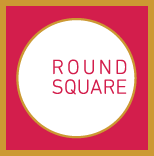Volcanoes
A volcano is an opening of the Earth’s crust through which molten rock, gases and ash can escape. This mixture of materials is called magma while it’s underground, lava when it is erupting and igneous rock once it’s cooled and solidified on the surface. Volcanoes occur because the earth’s crust is broken into 17 rigid tectonic plates that float on a hotter, softer layer in its mantle. They are generally found where tectonic plates are moving (often underwater). Volcanoes can also form where there is stretching and thinning of the crust’s plates. Some volcanic effects are beneficial, like the creation of more fertile soil, which in turn helps trees, crops and plants to grow. But volcanoes can also produce widespread destruction and loss of life.
National Geographic – Volcanoes 101
About 1,500 active volcanoes can be found around the world. Learn about the major types of volcanoes, the geological process behind eruptions, and where the most destructive volcanic eruption ever witnessed occurred.
Response and recovery – La Soufrière Volcano St Vincent
During the volcanic activity of La Soufriere in 1979 many people were evacuated from their own homes. Here they talk about life in the evacuation shelters, and how it felt to pick up the pieces when they returned – and one or two of the upsides of all that activity.
Volcanic Whispers are helping scientists predict eruptions
Scientists are using seismic noise interferometry to predict volcanic eruptions. Can these “volcanic whispers” help prevent future ruin?
Volcanoes: Now explore some written sources.
You might follow some of the links below or identify your own sources to extend your learning and help you to complete your worksheet:
- This looks at the impact of volcanic ash and gases and mitigation measures
- This article discusses geo-engineering solutions to the impact of volcanic eruptions
- A Single page summary of impacts and ways to mitigate
- A simple overview mitigation measures
- Information of safety in the context of volcanoes from National Geographic
- Advice on being ready for a volcano eruption from the Red Cross
- Shows how satellite imagery can be used to help predict eruptions
- Discovery channel video on how to survive a volcano and can be found in this site
- Some basic advice on what to do in the event of a volcano
- An automated volcano warning system explained
- How do scientists forecast eruptions?
